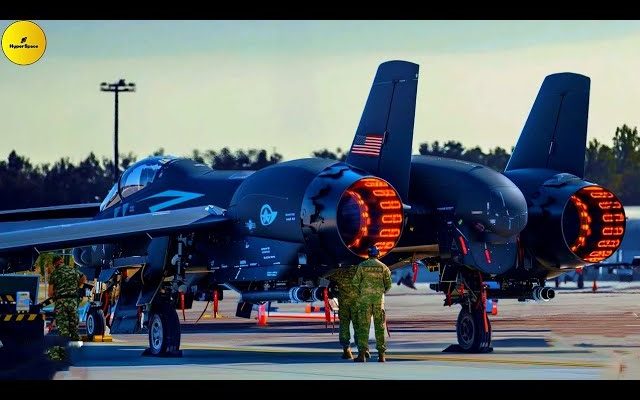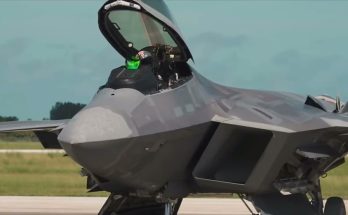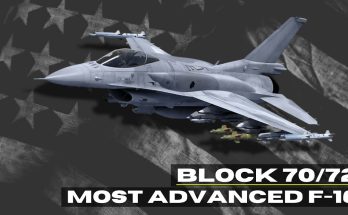The iconic A-10 Thunderbolt II, widely known as the “Warthog,” has been a symbol of American air power since it was first introduced in the 1970s. Its rugged design and unmatched capabilities in close air support (CAS) for ground troops have earned it a reputation as one of the most reliable and effective combat aircraft in history. However, as military technology rapidly evolves, the question arises: What does the future hold for the A-10? Recent revelations have shed light on its future in a new era of warfare, with updated capabilities, cutting-edge upgrades, and possible new roles for the A-10 in modern combat.
The Legacy of the A-10
The A-10 Warthog is perhaps best known for its incredible durability and ability to operate in hostile environments while delivering devastating firepower to support ground forces. Its GAU-8/A Avenger 30mm cannon is legendary, capable of shredding tanks, infantry, and other vehicles with precision. The A-10’s ability to fly low and slow, while still maintaining effective combat capability, makes it uniquely suited for CAS missions, especially in contested environments where enemy anti-aircraft defenses may be a concern.
Its reinforced titanium “bathtub” cockpit, which protects the pilot even when the aircraft is severely damaged, further solidifies the A-10’s reputation as one of the most survivable aircraft in combat. Over the years, the A-10 has been involved in numerous conflicts, from the Gulf War to more recent engagements in Afghanistan and Iraq, consistently proving its worth.
The A-10’s Future: Upgrades and Longevity
As the U.S. Air Force continues to modernize its fleet, there has been ongoing debate about whether to retire the A-10 in favor of newer platforms like the F-35. However, the A-10’s specialized role in close air support has kept it in service far longer than initially expected. The future of the A-10 now seems assured, thanks to a range of new upgrades designed to extend its service life well into the 2030s and possibly beyond.
Recent upgrades have included new avionics, improved targeting systems, and enhanced communication equipment, making the A-10 even more effective in joint operations with ground forces and other aircraft. The Warthog is also being outfitted with modern precision-guided munitions (PGMs), allowing it to engage targets with greater accuracy than ever before. These upgrades enable the A-10 to stay relevant in a rapidly changing battlefield where the ability to identify and hit high-value targets is crucial.
Additionally, the A-10’s combat radius, firepower, and survivability are enhanced by advancements in its electronic warfare (EW) systems. The integration of advanced threat detection and jamming capabilities means that the A-10 can better operate in environments with sophisticated anti-aircraft defenses. This means it can continue to support ground forces even in contested and denied airspace, a capability many other modern aircraft struggle with.
A New Role: Beyond Close Air Support
While the A-10’s primary role has always been close air support, its future may involve additional missions. Some experts believe the A-10 could be adapted for other critical functions, including counterinsurgency, tactical reconnaissance, and even anti-ship operations. The aircraft’s proven versatility and durability make it a potential asset in a variety of modern combat scenarios.
Another exciting possibility is the use of the A-10 in swarm tactics, in which multiple aircraft coordinate their attacks to overwhelm enemy defenses. This concept is being explored as part of the broader shift toward networked operations and artificial intelligence (AI) in military aviation. With its ability to carry a diverse array of weapons and its durability in high-threat environments, the A-10 could be a vital part of these future operations.
The Future of the Warthog in a High-Tech Era
Despite the rise of fifth-generation stealth fighters like the F-35, the A-10’s role in close air support remains unmatched. Its ability to stay on station for extended periods, loitering over a battlefield while providing continuous support to troops on the ground, gives it a unique edge. The new upgrades are also likely to keep the Warthog relevant in future conflicts, ensuring that it continues to serve as a powerful tool for the U.S. Air Force.
While some critics argue that newer, faster jets with advanced sensor capabilities could replace the A-10, the aircraft’s unique attributes—its low-speed maneuverability, ruggedness, and unmatched gunpower—ensure that it remains indispensable for certain mission sets. In the new era of advanced technology and precision warfare, the A-10’s rugged simplicity and specialized role make it an aircraft that is not only surviving but thriving.
Conclusion
The A-10 Warthog is far from being relegated to the history books. With cutting-edge upgrades, expanded capabilities, and the flexibility to adapt to new mission sets, the A-10 will remain a critical part of the U.S. Air Force’s arsenal for years to come. As modern warfare becomes increasingly complex, the Warthog’s ability to deliver close air support and operate in contested environments will ensure its place in the future of aerial combat. The A-10’s future may be different, but it is certainly secure—ushering in a new era of capability and versatility for this legendary aircraft.



